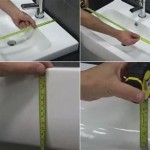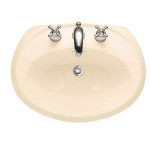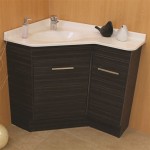Can You Use Baking Soda To Clean Bathroom Tiles?
Bathroom tiles are susceptible to a variety of stains and grime due to the constant exposure to moisture, soap scum, and mildew. While many commercial cleaners are available, some individuals prefer natural cleaning solutions. Baking soda, a common pantry staple, is often touted as a versatile cleaning agent, particularly for tackling bathroom tile stains. This article will explore the effectiveness of baking soda for cleaning bathroom tiles and provide guidance on its proper application.
The Cleaning Power of Baking Soda
Baking soda, also known as sodium bicarbonate, is a mild abrasive with alkaline properties. These characteristics make it an effective cleaning agent for various surfaces, including bathroom tiles. The abrasive nature of baking soda helps to scrub away dirt and grime, while its alkalinity neutralizes acids, making it particularly effective against soap scum and mildew.
Baking soda can be used alone or combined with other ingredients to enhance its cleaning power. For instance, mixing baking soda with water creates a paste that can be applied to tiles and scrubbed with a non-abrasive brush. For tougher stains, a mixture of baking soda and vinegar can be used. The reaction between these two substances creates a fizzing action that helps to loosen stubborn dirt and grime.
Using Baking Soda for Cleaning Bathroom Tiles
Here is a step-by-step guide on how to use baking soda to clean bathroom tiles:
- Remove any loose dirt or debris from the tiles using a broom or vacuum cleaner.
- Create a paste by mixing baking soda with water. The consistency should be similar to toothpaste.
- Apply the paste to the tiles using a sponge or cleaning cloth.
- Scrub the tiles gently using a non-abrasive brush or sponge.
- Rinse the tiles with clean water and dry them with a clean cloth.
Considerations and Cautions
While baking soda is generally safe for cleaning bathroom tiles, there are a few considerations and cautions to keep in mind:
Grout: Baking soda can be abrasive, and using it too vigorously can damage the grout between tiles. For cleaning grout, it is best to use a gentler approach, such as a mixture of baking soda and water, applied with a toothbrush.
Sensitive Surfaces: Avoid using baking soda on polished or delicate tile surfaces, as it may scratch or dull the finish. These surfaces may require alternative cleaning methods, such as a mild soap and water solution.
Marble and Natural Stone: Baking soda can be harsh on natural stone surfaces like marble, granite, and limestone. These materials are susceptible to etching, which can permanently damage the surface. Use a pH-neutral cleaner specifically designed for these types of materials.
Ventilation: Baking soda is generally safe to use indoors, but it is advisable to ensure adequate ventilation, particularly when mixing it with vinegar, as the reaction can release carbon dioxide gas.

How To Clean Bathroom Tiles With Baking Soda Mygate

How To Clean Bathroom Tiles Problems With Their Solutions 2024

How To Clean Bathroom Tile Grout Home Remedies Banish Mould Express Co

Does Cleaning Grout With Baking Soda And Vinegar Really Work Decoist

14 Ways To Use Baking Soda When Cleaning At Home

Cleaning Mrs Hinch Fans Share How To Clean Grout Using Baking Soda Express Co

7 Most Powerful Ways To Clean Tiles Grout Naturally

3 Of The Best Ways To Clean Grout In Your Bathroom Cleaning Tiles Baking Soda Cleaner

The Secret Of Baking Soda How To Clean Bathroom Tiles In 5minutes

Does Cleaning Grout With Baking Soda And Vinegar Really Work Decoist
Related Posts







